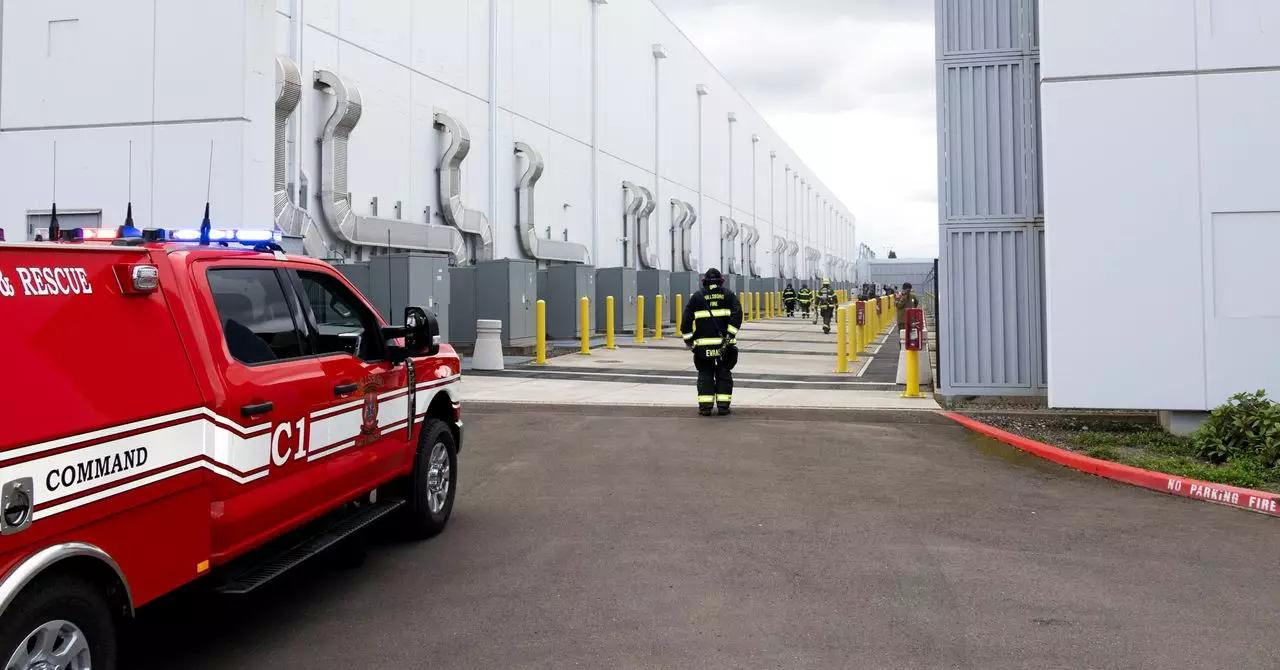As artificial intelligence advances at a breakneck speed, the backbone infrastructure supporting these technological marvels faces increasing scrutiny. Central to this is the fragile and complex network of data centers that house the servers, often pushing the limits of electrical and mechanical systems. Recent fires, such as the one at a data center operated by Digital Realty in Hillsboro, Oregon, highlight a crucial vulnerability: the delicate balance between powering immense computational loads and maintaining safety. These incidents are not isolated anomalies but symptomatic of a broader issue rooted in high-density, high-capacity data centers struggling to keep pace with demands fueled by generative AI and machine learning.
The fire’s origins, as preliminary investigations suggest, stem from electrical or mechanical failures within the power infrastructure. This is a stark reminder that as we scale up, so do the risks associated with energy management. While data centers are engineered to be resilient, their increasing complexity, combined with surges in energy consumption, often introduces vulnerabilities that can lead to catastrophic failures. The incident underscores how vital it is for the industry to reassess existing safety protocols, especially as data centers become even more critical to our digital lives.
Inadequate Cooling and Energy Infrastructure: The Silent Enemies
One of the less conspicuous but equally dangerous factors contributing to data center fires is thermal regulation. When systems like uninterruptible power supplies (UPS) or server clusters operate under intense loads, heat generation skyrockets. Without proper cooling systems and diligent temperature monitoring, overheating can occur rapidly, leading to failures that ignite fires. The Hillsboro incident further reaffirms this; insufficient cooling may have exacerbated issues within the UPS cabinet, highlighting a persistent oversight in data center design.
It’s tempting to indulge in technological optimism—believing that sophisticated hardware and monitoring systems can entirely prevent such incidents. However, the reality is that thermal management is often a weak link, especially in facilities prioritizing density and efficiency over redundancy and cooling capacity. As AI and large-scale data processing become commonplace, the challenge is not just handling data but doing so without jeopardizing safety. The fire serves as a wake-up call that investing in advanced cooling, real-time thermal analytics, and fail-safe mechanisms is no longer optional but essential.
The Underestimated Risks of Power Storage Units
Among the various components involved in maintaining data center uptime, UPS systems are vital. They provide temporary power during outages, ensuring continuous operation. Made of large batteries—similar in design to electric vehicle packs—these systems are inherently susceptible to electrical malfunctions. Despite being an industry staple, they are often underestimated as potential fire hazards.
The Hillsboro investigation initially suspected lithium-ion batteries, a common cause of electronic fires, but was later ruled out. Instead, evidence pointed toward electrical or mechanical failures within the UPS cabinet itself. This exemplifies a critical misconception: that batteries are the primary risk factor, overshadowing the importance of the supporting electrical and mechanical systems. The complex electrical networks used in modern data centers require rigorous maintenance and monitoring. Failures in these systems can go unnoticed until they manifest catastrophically, revealing a dangerous blind spot in current safety protocols.
Furthermore, the incidence of such failures raises questions about the adequacy of current industry standards in preventive maintenance and technological upgrades. As systems age, their susceptibility to faults increases, and without proactive measures, the risk of fire escalates. This incident signals a need for industry-wide re-evaluation of how electrical infrastructure is managed and monitored.
Responsibility and Industry Response: A Call for Transparency and Innovation
Company statements following the incident reflect an intent to improve safety and prevent future occurrences. However, the lack of detailed disclosure about specific changes raises concerns about complacency or a reluctance to reveal vulnerabilities. The key to effective risk mitigation lies in transparency and a willingness to scrutinize and upgrade existing systems proactively.
The incident also emphasizes the importance of cross-industry collaboration. Data center operators, equipment manufacturers, and fire safety experts must work together to develop standardized safety protocols that address the unique challenges of AI-driven high-capacity facilities. Incorporating smarter sensors, predictive maintenance systems, and enhanced cooling solutions should become industry norms rather than exceptions.
In the broader perspective, this fire is more than an isolated event—it exemplifies the urgent need for a paradigm shift in how we approach safety in the era of relentless technological expansion. As the appetite for AI, machine learning, and data-intensive applications grows, so too must our commitment to safeguarding the infrastructure that enables these innovations. The needle moving forward is to anticipate risks, enforce rigorous safety standards, and adopt a proactive stance that prevents catastrophe rather than reacting after the fact.

